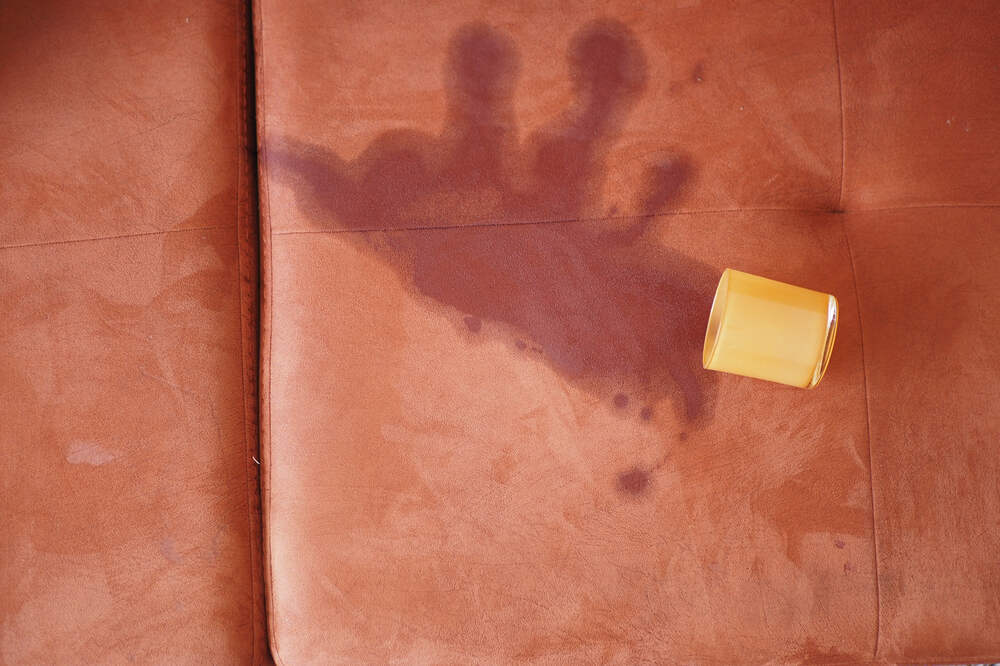Water stains on your couch can be a real eyesore. They disrupt the aesthetic harmony of your living room and can be a source of embarrassment when you have guests over. But more than that, they can also be a breeding ground for bacteria, affecting the hygiene of your home. Understanding Water Stains
| Step | Description | Supplies Needed |
|---|---|---|
| 1. Blot the Stain | Gently blot the water stain with a clean white cloth or paper towel to absorb excess moisture. Avoid rubbing to prevent spreading the stain deeper into the fabric. | Clean white cloth or paper towels |
| 2. Use Distilled Water | For fresh stains, dampen a clean cloth with distilled water and gently dab the stain. Continue blotting until the stain starts to fade. Avoid using tap water due to mineral content. | Distilled water |
| 3. Apply Mild Dish Soap | Mix a few drops of mild dish soap with distilled water. Dampen a cloth with this solution and gently dab the stain, then blot with a dry cloth to remove excess moisture. | Mild dish soap, distilled water |
| 4. Vinegar Solution | Mix equal parts of white vinegar and distilled water in a spray bottle. Spray onto the stain, let it sit for a few minutes, then blot with a clean cloth. Repeat if necessary. | White vinegar, distilled water |
| 5. Rubbing Alcohol | Dampen a cloth with rubbing alcohol and gently dab the stain. Blot the area with a clean cloth to remove any residue. Ensure proper ventilation during this process due to strong odors. | Rubbing alcohol |
| 6. Brush the Fabric | After treating the stain, use a soft-bristle brush to fluff the fabric and restore its texture once it is completely dry. | Soft-bristle brush |
| 7. Vacuum (Optional) | Before starting, vacuum the stained area to loosen any dirt or particles that might be clinging to the fabric, especially if the spill came from a source that may have left debris. | Vacuum cleaner |
| 8. Steam Cleaning (Optional) | If available, use a steam cleaner as it effectively loosens dirt and kills bacteria and mold at high temperatures, making it ideal for tough stains on fabric sofas. | Steam cleaner |
What Causes Water Stains?
Water stains are typically caused by the interaction of water with the fabric of your couch. This could be due to accidental spills, high humidity, or even a leaky roof. The water seeps into the fabric, causing discoloration and leaving behind a visible mark once it dries.
Types of Couch Fabrics
Couches can be made from a variety of materials, including leather, microfiber, and cotton. The type of fabric your couch is made of will determine the best method for removing water stains. For instance, leather couches require different care than cotton ones.
Preparation for Cleaning
Gathering Supplies
Before you start cleaning, gather all the necessary supplies. This includes:
- Clean cloths
- Mild detergent or specialized cleaner
- Soft-bristled brush
- Spray bottle
Testing for Colorfastness
Before applying any cleaning solution to your couch, it’s crucial to test it on a hidden area to ensure it won’t cause discoloration.
Safety Precautions
Ensure your cleaning area is well-ventilated to avoid inhaling any potentially harmful fumes. Also, try to avoid using harsh chemicals that could damage your couch or pose a health risk.
Step-by-Step Cleaning Methods
1: Using Water and Soap
A simple mixture of water and mild soap can be effective for removing water stains. Here’s how to do it:
- Mix a small amount of soap with warm water in a spray bottle.
- Spray the solution onto the stain.
- Gently scrub with a soft-bristled brush.
- Wipe away the soap with a clean, damp cloth.

2: Vinegar and Baking Soda
Vinegar and baking soda can work wonders on stubborn stains. The chemical reaction between these two ingredients helps to lift the stain from the fabric.
- Mix equal parts vinegar and baking soda to form a paste.
- Apply the paste to the stain and let it sit for a few minutes.
- Scrub gently with a brush, then rinse with a damp cloth.
3: Commercial Cleaners
There are many commercial cleaners available that are designed specifically for removing water stains from couches. Be sure to follow the instructions on the product label for best results.
4: Professional Cleaning Services
If the stain is particularly stubborn, or if your couch is made of a delicate material, it may be best to hire a professional cleaning service. They have the expertise and equipment to handle any type of stain.
Post-Cleaning Care
Drying Techniques
After cleaning, it’s important to dry your couch properly to prevent the formation of mold or mildew. You can use a fan or dehumidifier to speed up the drying process.
Preventive Measures
To avoid future water stains, consider using coasters for drinks and applying a fabric protectant to your couch.
Frequently Asked Questions
- How often should I clean my couch? It’s recommended to clean your couch every 6-12 months, or whenever a stain occurs.
- Can I use bleach on my couch? Bleach can cause discoloration and should only be used on white fabrics.
- What if the stain persists after cleaning? If the stain is still visible after cleaning, it may be best to hire a professional cleaning service.

